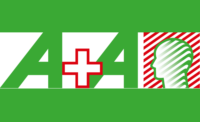A reminder from Rockford Systems LLC:
View the 2017 solar eclipse safely

A solar eclipse will be visible across North America on Monday, August 21, weather permitting. During a solar eclipse, the moon blocks part or all of the sun. The whole continent will experience a partial eclipse lasting 2 to 3 hours.
Halfway through the event, anyone within a roughly 70-mile-wide path from Oregon to South Carolina will experience a brief total eclipse, when the Moon completely blocks the Sun's bright face for up to 2 minutes 40 seconds at about 1:20 pm, turning day into night and making visible the otherwise hidden solar corona -the Sun's outer atmosphere-one of nature's most awesome sights. Bright stars and planets will become visible as well.
Looking directly at the Sun is unsafe except during the brief total phase of a solar eclipse ("totality"), when the Moon entirely blocks the Sun's bright face, which will happen only within the narrow path of totality. The only safe way to look directly at the uneclipsed or partially eclipsed Sun is through special-purpose solar filters, such as "eclipse glasses" (example shown at left) or hand-held solar viewers. Homemade filters or ordinary sunglasses, even very dark ones, are not safe for looking at the Sun.
To date four manufacturers have certified that their eclipse glasses and hand-held solar viewers meet the ISO 12312-2 international standard for such products: American Paper Optics, Rainbow Symphony, Thousand Oaks Optical, and TSE17.
Stand still and cover your eyes with your eclipse glasses or solar viewer before looking up at the bright Sun. After glancing at the Sun, turn away and remove your filter-do not remove it while looking at the Sun. Do not look at the uneclipsed or partially eclipsed Sun through an unfiltered camera, telescope, binoculars, or other optical device. Similarly, do not look at the Sun through a camera, a telescope, binoculars, or any other optical device while using your eclipse glasses or hand-held solar viewer - the concentrated solar rays will damage the filter and enter your eye(s), causing serious injury.
An alternative method for safe viewing of the partially eclipsed Sun is pinhole projection. For example, cross the outstretched, slightly open fingers of one hand over the outstretched, slightly open fingers of the other. With your back to the Sun, look at your hands' shadow on the ground. The little spaces between your fingers will project a grid of small images on the ground, showing the Sun as a crescent during the partial phases of the eclipse.
Solar Eclipse Timing
11:54 a.m. Eclipse starts (note: thick cloud cover will limit or potentially prevent viewing)
1:19 p.m. Peak time of coverage (about 86 percent)
2:45 p.m. Eclipse ends
One of Nature's Grandest Spectacles
By following these simple rules, you can safely enjoy the view and be rewarded with memories to last a lifetime.
Looking for a reprint of this article?
From high-res PDFs to custom plaques, order your copy today!






